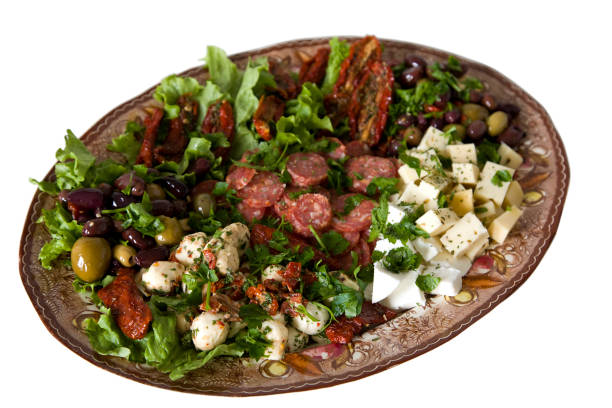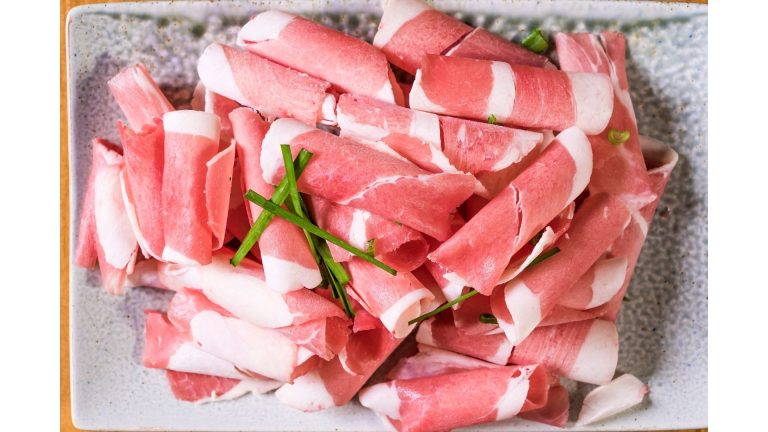Is Prosciutto a Processed Meat?
Prosciutto is one of the world’s best-known Italian delicacies. So what is prosciutto? It’s a dry-cured ham made from air-dried pork leg.
Prosciutto is considered to be processed meat because it involves the process of salting and curing.
Any meat that involves salting, curing, fermenting, smoking, pickling is considered to be processed.
The result is a delicious treat that is typically served in thin slices. But what about this strange-sounding ingredient?
Prosciutto is a type of dry-cured meat.
Read this article to clear all your doubts regarding processed meat.
Table of Contents
What Defines Processed Meat?
There are so many ways to define meat and yet there’s no clear consensus on what exactly meat is.
There are more than 200 recognized definitions of what constitutes processed meat.
The U.S. Food and Drug Administration (FDA) defines processed meats as “meats and meat food products that have been changed in form, composition, or combination through a process of salting, curing, fermenting, smoking, pickling, fermenting, alkalizing, or any combination of these processes; or that have been preserved by canning, freeze-drying, dehydrating, or similar methods.”
According to the American Heart Association, processed meat includes all types of red meat and poultry that undergo “extensive processing” including the following: ham, bacon, corned beef, hot dogs, sausages, and luncheon meats such as bologna, salami, and pepperoni.
Others consider processed meat to include items that are smoked and cured and not necessarily the same as traditional ham, bacon, or sausage.
Processed meat contains a mixture of ingredients including meat, salt, nitrites, sugar, and sometimes preservatives.
A study in the Journal of Nutrition reported that people who eat a lot of processed meat had a higher risk of heart disease than people who ate less.
They are also used in processed meats as a color fixative.
The Food and Drug Administration (FDA) currently allows only sodium nitrite to be used as a food additive and allows no more than 6.25 mg of nitrate per serving for a total daily intake of nitrite to be no more than 10 mg.
Although the FDA does not require labels on processed meats that are cured with nitrites, some companies voluntarily add this label if they use nitrites in their processing.
Processed meats have become ubiquitous in our society. They are found in delis, fast food restaurants, grocery stores, and convenience stores.
The nitrates in processed meat can turn into nitrosamines, which are found in tobacco and contaminated water.
They are formed when processed meat is exposed to a high temperature. There is a correlation between the risk of cancer and the use of nitrosamines.
Meat smoking can lead to the formation of polycyclic aromatic hydrocarbons. In this case, meat or coal is an organic substance that burns.
Excess salt intake can lead to hypertension and heart disease, even though regular table salt isn’t completely harmless.
Is Prosciutto Considered a Processed Meat?
Prosciutto is considered a lump of processed meat because it is cured. Traditionally Italian prosciutto is made by rubbing a piece of meat with salt and herbs.
The American Institute of Nutrition (A.I.N.) does define prosciutto as processed meat because it’s made from pork products that undergo a series of processes, such as salting, smoking, drying, curing, and aging.
No chemical agents should be used in the process of making real prosciutto. After a week in a cool place, the meat is left to hang and dry.
It’s necessary to cure meat in warm and humid environments to remove excess water from the meat.
The meat is washed from salt that absorbs the water and bacteria after this process. For up to three months, the meat is hung in a cool, dry place after washing.
Exposure to the air causes the surface to solidify. Experts inspect the smell and appearance of the meat to make sure it isn’t rotting.
Prosciutto is less harmful than other processed meats because no chemical elements are used in the curing process.
High blood pressure, heart disease, and stroke are all consequences of excessive consumption of prosciutto.
Some of the symptoms you will see when you consumed excess salt:
- Persistent thirst
- Constant urge to urinate
- Swelling
- Craving salty foods
- Mild headaches
- Finding non-salty foods too bland
Are All Cured Meats Processed?
If you’re a meat-eater, you’re probably wondering if all cured meats are processed. The answer is yes. All cured meats are processed. Some examples of cured meats are:
- Prosciutto
- Chorizo
- Pepperoni
- Bacon
- Pancetta
- Lardo
- Guanciale
- Pastrami
It is not yet known how much-processed meat can be safely eaten.
According to a study by Harvard University, most researchers don’t differentiate between red and white processed meats or between meat with nitrites and nitrite-free meat.
Pepperoni, American bacon, ham, deli meat, and various types of sausages are some of the meats that are high in nitrates.
The traditional Italian recipes for curing meat, such as pancetta and prosciutto, should not include nitrates.
Is Prosciutto Carcinogenic?
You might have heard that processed meat increases the risk of getting Oncological diseases.
According to numerous studies, this is true. Chemicals from processed meats can damage cells in the colon and rectum which can lead to cancer.
All processed meats were classified by the World Health Organization as cancerogenic in 2015.
On April 2, 2015, the FDA announced that it had discovered traces of carcinogenic chemicals in some batches of prosciutto, including three samples from Italy, which had tested positive for benzopyrene and 2,3,7,8-tetrachlorodibenzo-p-dioxin.
The FDA said it had found “unacceptable levels” of the contaminants.
The experts studying the links between cancer and processed meat don’t mention which type of meat was used in the research.
Some data show that meat treated with nitrite is more cancer-causing than meat treated with salt.
Prosciutto may be less harmful to your health than bacon. This isn’t accepted by the World Health Organization and you should still be careful with your intake.
The UK Department of Health recommends against consuming more than 2 ounces of red processed meat a day.
Conclusion
I hope you understand what a lump of processed meat is.
You can eat prosciutto but don’t eat heavily. Eat-in thin slices or as a snack. The amount of food you consume is the key to leading a healthy lifestyle.

Foodie and a passionate cook, I am here to share all of what I know about cooking, kitchen, and food prepping.
Follow me for delicious and healthy recipes.







